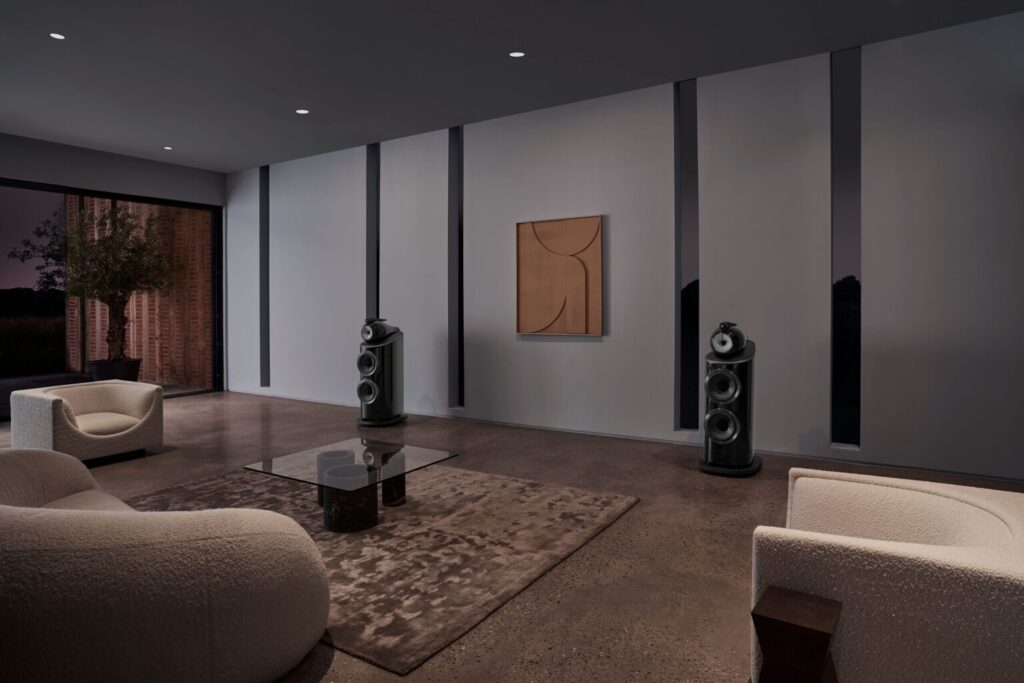This post gives some useful design goals for surface treatments in a home theater which will be discussed in the following.
- Care has to be taken if wall surfaces are treated acoustically differently as this may lead to undesirable flutter echoes. Flutter echoes are easy to address by absorbers or diffusers since they are a high-frequency issue. Domestic rooms most likely create flutter echoes nevertheless, reflections from different directions have the ability to prevent isolated sounds or interference dips and hence become possibly less/not audible. Moreover, typical home furnishing can disturb reflections through their capability of scattering incidental sounds and therefore preventing them from bouncing between the walls.
- Front and rear walls do not add any convenient value to sound reproduction in home theaters in terms of spatial perception, since these reflections are only time delayed versions of the direct sound. It will be advantageous to apply absorption or diffusion material on the rear walls.
- The front side wall reflections can be treated optional. Either absorptive or diffusive elements can be applied to treat those reflections. However, since the center channel is the most important channel in movies in terms of speech reproduction, it might be supportive to leave the front side wall blank to allow the creation of image broadening for the center channel. The front lateral reflections will become less influential and will be masked in case of simultaneous loudspeaker performance. The influence of these reflections on the spatial perception was discussed in 4.1.2. If the first side-wall reflections should be attenuated one has to consider to do so across the whole spectrum. A degraded sound quality will be the result if only parts of the spectrum are addressed.
- The space between the surrounding loudspeakers can be treated with diffusers to contribute to the creation of envelopment and thus covering a broader listening area and most effective if placed at ear height. The creation of envelopment is caused by the lower and lower mid frequencies. This leads to a design goal for diffusers regarding their depth. In the case of engineered diffusive surfaces like a Schroedinger diffuser, a depth of 0.2 m should be considered and a depth of 0.3 m for geometric shapes.
- The lower area of the side walls between the floor and surround channels can also be treated as optional since their contributing reflections will probably be redirected to the floor or the chairs which tend to be absorptive materials.
- The ceiling does not contribute to any valuable spatial perception and should be treated with absorbent elements like perforated ceiling panels and thus .contributes to low frequency absorption
An Example!
A possible surface layout for the home theater design example with respect to the discussed surface treatments is shown in figure 1. and discussed below.

- The floor is covered with a carpet on a felt underlay. The underlay increases the absorption down to the low frequencies.
- The ceiling consists of a micro perforated panel acting as a broadband absorber.
- The front and rear walls are mostly absorbing over the whole frequency range.
- The side walls are treated with poly cylindrical absorber/diffuser intermixed with absorbing and reflecting surfaces. The absorbing materials are staggered so that opposite walls fail to cause flutter echoes. The polys comprise a semi-cylindrical geometric shape, are 0.3 m deep and placed at short distances between them extending from floor to ceiling. The cavity behind the polys is filled with absorbent material to increase low-frequency absorption. The diffusive shape is dispersing the sound horizontally and supports the surrounding loudspeaker performance by creating the listener’s envelopment. The front side wall reflections are left untreated since they will not degrade the sound towards the listener. They are rather supportive in an isolated performance of the center channel which is commonly the case in the program material of movies.
- The corners of the room are left untreated since good results are already obtained by the introduced surface treatments and the supportive subwoofer placement in terms of room mode cancellation.
In this post, we went to first part of the surface treatments and examined its considerations. Items needed to mention audio improvements and other parameters will be published in future posts. These items will pave the way for creating a home theater with the highest quality.
The audio products offered in Saba intelligent systems, which include professional speakers and amplifiers and inakustik cables with their great variety and high quality, make it possible to implement any type of equipment according to the relevant needs.



